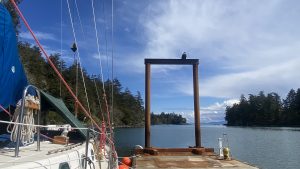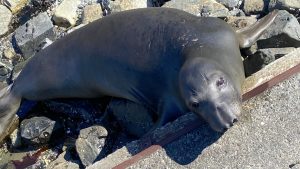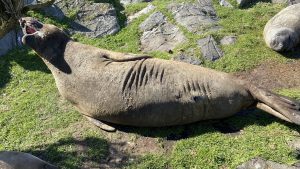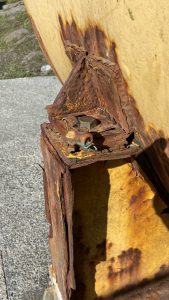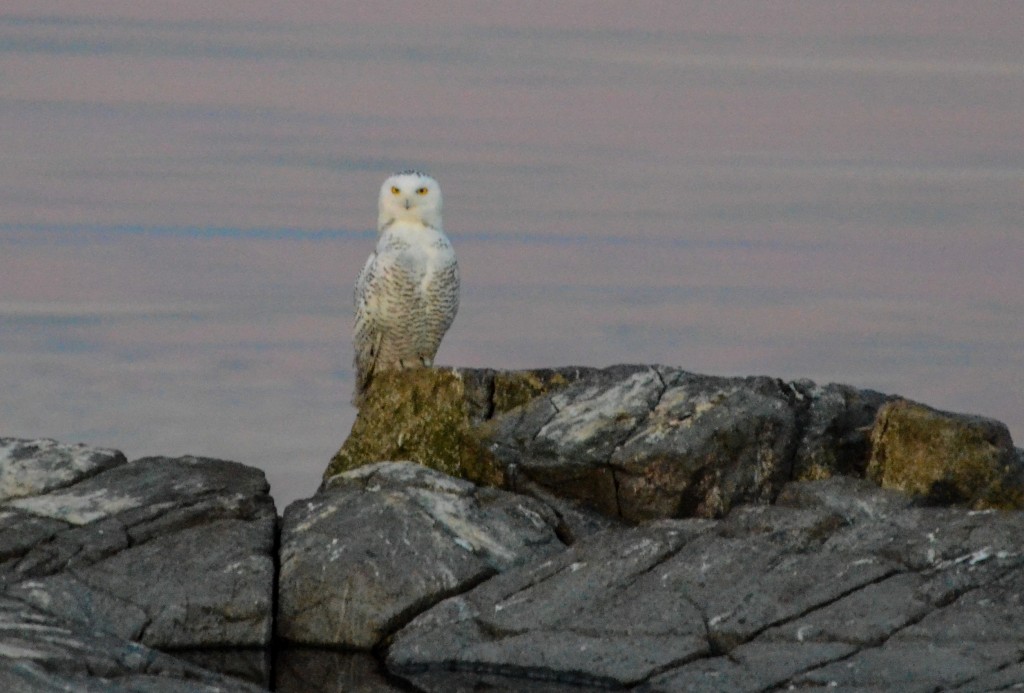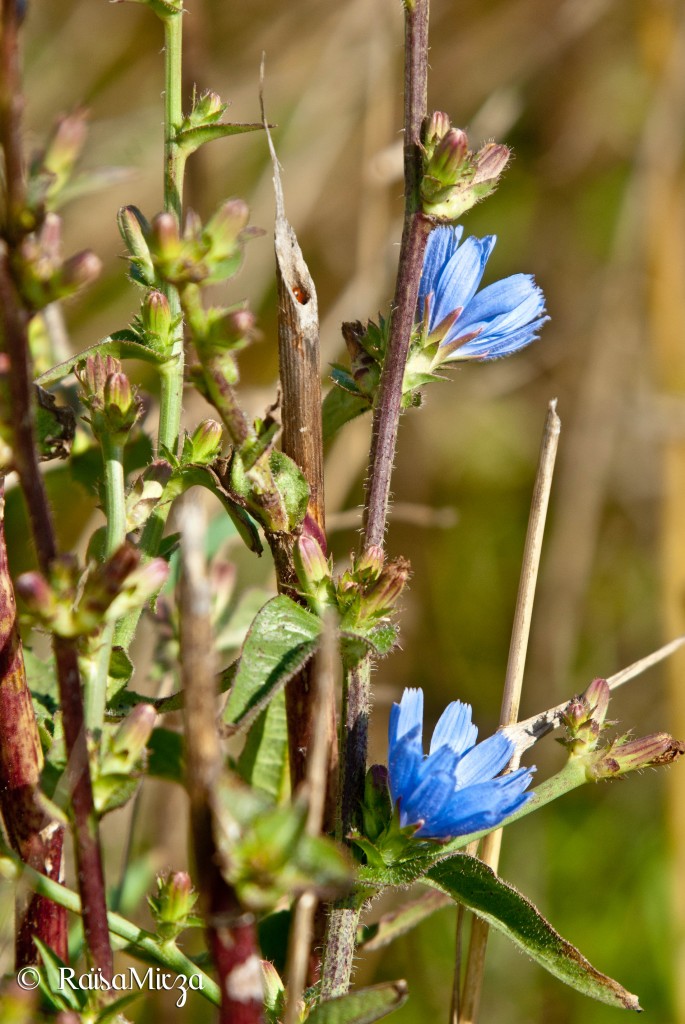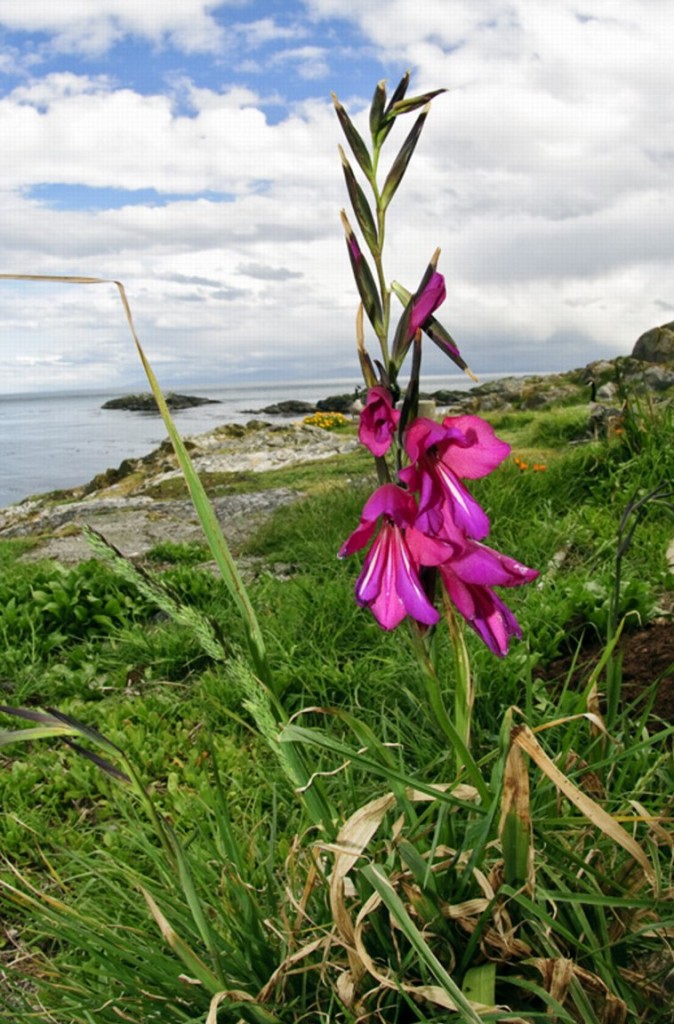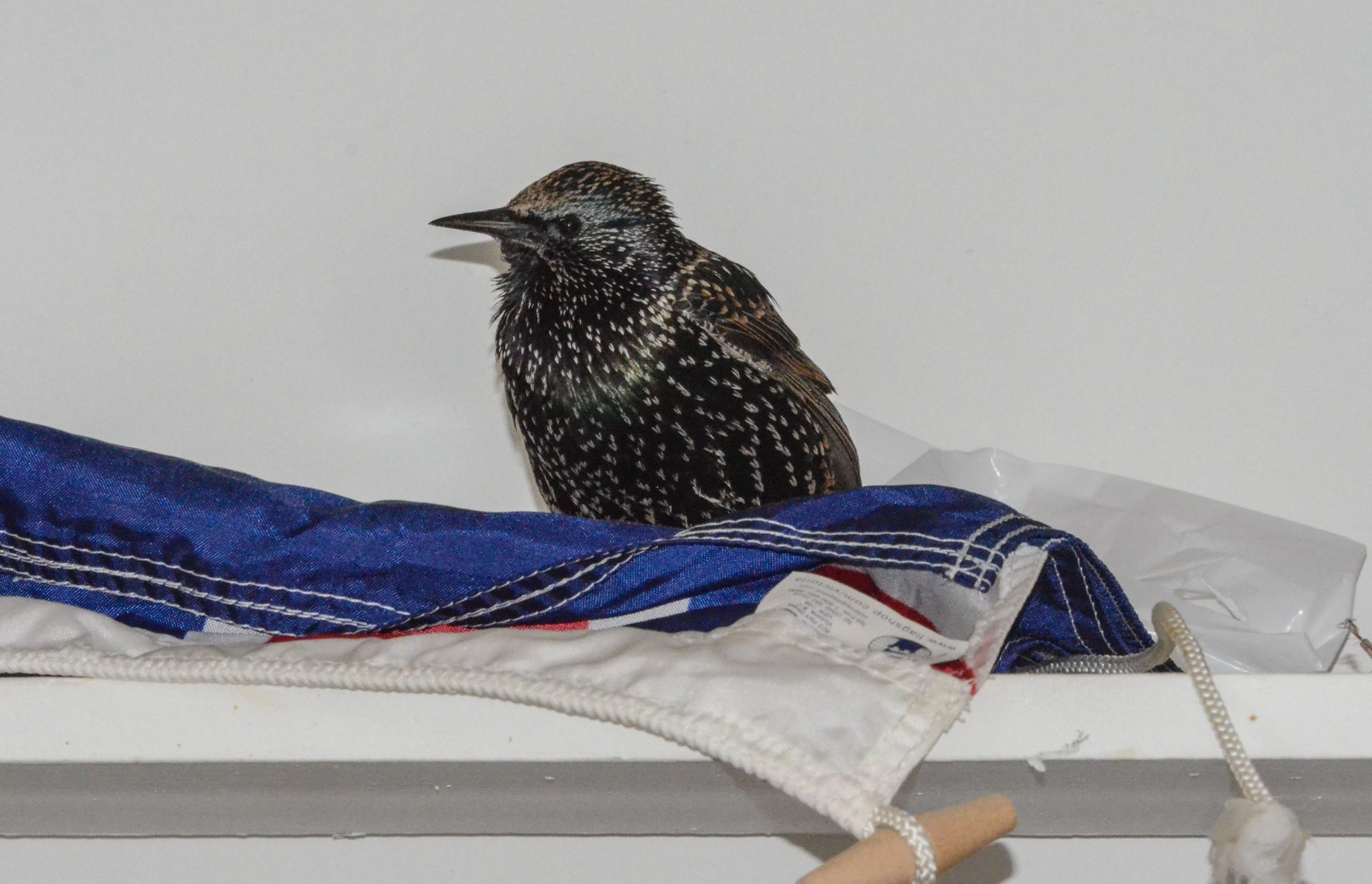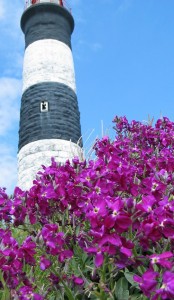
Wallflowers were planted in the early years along the sidewalks by the lightkeepers. They still exist and in a mild winter, you can find them blooming on the island. 
There are some interesting interactions that repel predator species which I have reproduced here from Wikipedia.
Defensive compounds
[edit]
Like most Brassicaceae, species in the genus Erysimum produce glucosinolates as defensive compounds.[16][17] However, unlike almost all other genera in the Brassicaceae, Erysimum also accumulates cardiac glycosides, another class of phytochemicals with an ecological importance in insect defense.[18][19] Cardiac glycosides specifically function to prevent insect herbivory[20] and/or oviposition[21] by blocking ion channel function in muscle cells.[22] These chemicals are toxic enough to deter generalist,[23] and even some specialist[24] insect herbivores. Cardiac glycoside production is widespread in Erysimum, with at least 48 species in the genus containing these compounds.[19][25] Accumulation of cardiac glycosides in Erysimum crepidifolium, but not other tested species, is induced by treatment with jasmonic acid and methyl jasmonate,[26][25] endogenous elicitors of chemical defenses in many plant species.[27] Molecular phylogenetic analysis indicates that Erysimum diversification from other Brassicaceae species that do not produce cardiac glycosides began in the Pliocene (2.33–5.2 million years ago),[28][1] suggesting relatively recent evolution of cardiac glycosides as a defensive trait in this genus.
Classication From Wikipedia:
| Kingdom: | Plantae |
| Clade: | Tracheophytes |
| Clade: | Angiosperms |
| Clade: | Eudicots |
| Clade: | Rosids |
| Order: | Brassicales |
| Family: | Brassicaceae |
| Genus: | Erysimum |
| Other Members of the Angiosperms at Race Rocks |
and Image File |
 The Race Rocks taxonomy is a collaborative venture originally started with the Biology and Environmental Systems students of Lester Pearson College UWC. It now also has contributions added by Faculty, Staff, Volunteers and Observers on the remote control webcams. The Race Rocks taxonomy is a collaborative venture originally started with the Biology and Environmental Systems students of Lester Pearson College UWC. It now also has contributions added by Faculty, Staff, Volunteers and Observers on the remote control webcams. |

